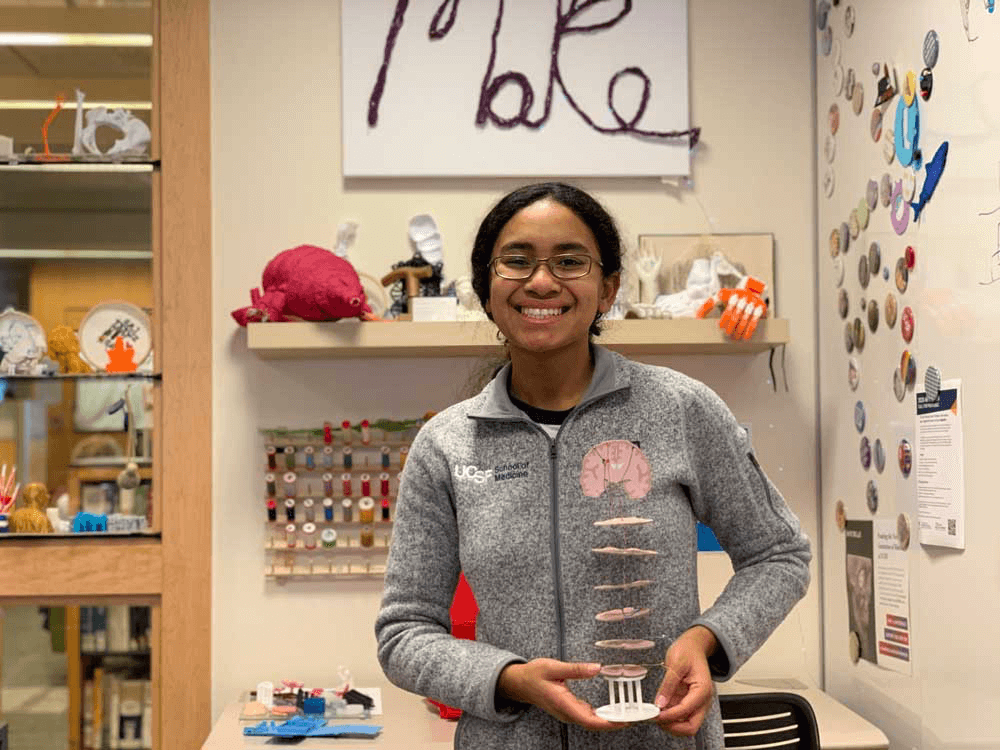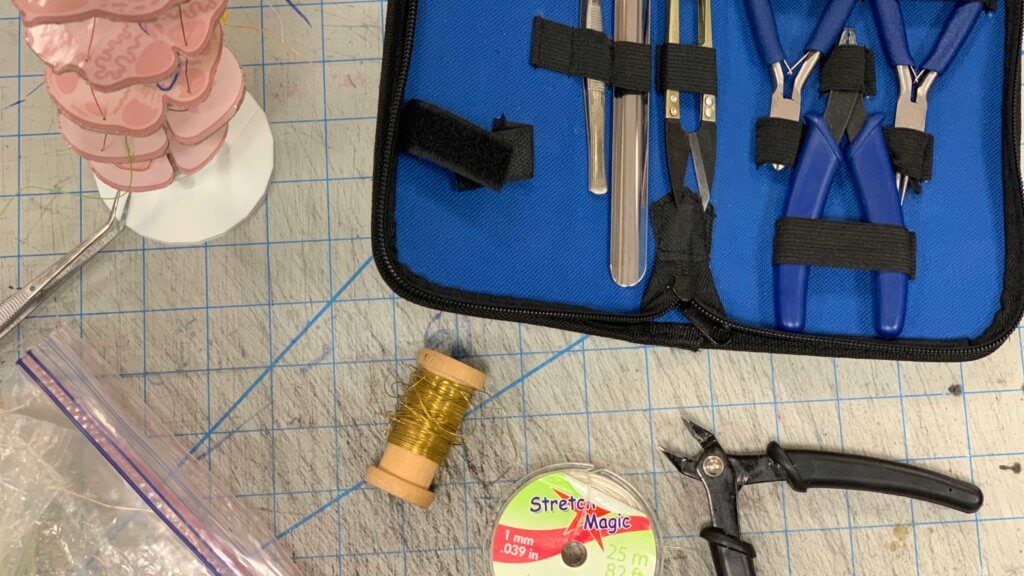This week’s maker is 2nd year student in the UCSF School of Medicine, Jacqueline Booker. We caught up with Jacqueline in between her busy schedule to see what she has been making in the Makers Lab.

Q: What did you make?
A brain-spine pathways model. I used the Cricut and other tools to create the model of the spinal cord and brain stem that shows how different pathways move through the structures.
Q: Why did you want to make it?
When it comes to anatomy, I rely heavily on 3D models to help visualize. When we were first taught the material, the main way we studied it was using two-dimensional images. From looking at the two dimensional images, we would have to imagine how these pathways ran in 3D. I wished there was a model that allowed me to see how everything was laid out in a 3D space. This is how I learn best.

Q: What was your process?
I first came in knowing that I wanted something with a lot of detail and accuracy, so my first inclination was to use 3D printing. But when I looked into it more, making the different slices would have required making each portion from scratch. So, I thought the Cricut would be able to provide the level of detail I needed for the project, in a shorter amount of time.
First, I printed images of cross sections of the spinal cord and brain stem. Next, I used the Cricut to cut out the specific shapes of the structures. From there I used jewelry making tools to make the pathways. Last, I reused a pizza table as a stand to stabilize the model. Eventually, I designed and 3D printed a custom stand.

Q: What was the hardest part of the process?
I used a lot of media that I have never used before; like combining wire with the Cricut. Technically speaking, trying to glue wire to different materials was very hard and I had to troubleshoot adhesives. I first tried the 3D printing pen, that didn’t work. Some people in the Makers Lab suggested wire.
Q: What was your favorite part of the process?
My favorite part is the reactions people have. Honestly, I wanted to stop making it at times, but I got a lot of positive feedback to keep going. Also, other students and people who study anatomy told me they wished they had a tool like the one I created, which is very encouraging.

Q: Why did you make it instead of buying it?
I could not find the type of model that I was looking for that showed these pathways. It may exist (I didn’t look that hard), but it would probably cost more than I was willing to pay for a learning tool.
Q: How did this help make you a better student?
Since this is a neuroanatomy project, I was focusing on every structure as I made it. By creating it I feel like it helped me process the information more deeply, compared to passively reading about it.
Q: What do you want to make next?
First, I want to make another version of this model. Next, I would like to make another anatomical model and am open to keep using the Cricut or 3D printer.
